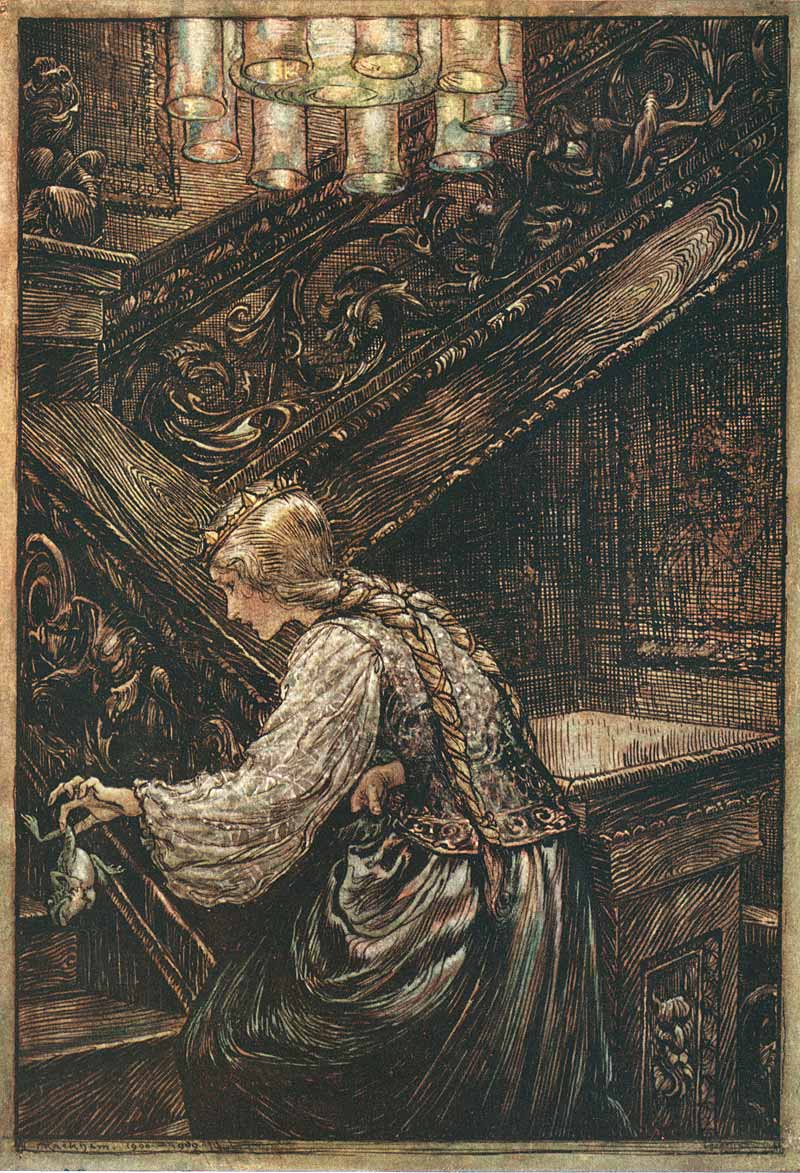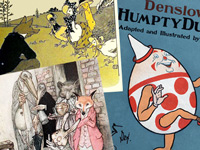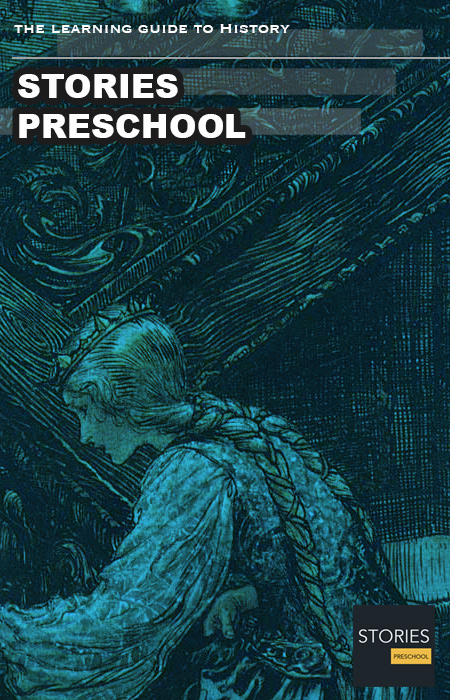The Frog Prince

"The Frog Prince; or, Iron Henry" (German: Der Froschkönig oder der eiserne Heinrich, literally "The Frog King; or, The Iron Heinrich") is a fairy tale, best known through the Brothers Grimm's written version; traditionally it is the first story in their collection. The 2009 Disney film, The Princess and the Frog, is loosely based on this story.
Plot
In the tale, a spoiled princess reluctantly befriends the Frog Prince (meeting him after dropping a gold ball into a pond), who magically transforms into a handsome prince. Although in modern versions the transformation is invariably triggered by the princess kissing the frog, in the original Grimm version of the story the frog's spell was broken when the princess threw it against a wall in disgust.
In other early versions it was sufficient for the frog to spend the night on the princess' pillow. The frog prince also has a loyal servant named Henry (or Harry) who had three iron bands affixed around his heart to prevent it from breaking in his sadness over his master's curse, but when the prince was reverted to his human form Henry's overwhelming happiness caused all three bands to break, freeing his heart from its bonds.
A Russian folk version "Tsarevna Lyagushka" (The Frog Princess) has the male and female roles reversed: the male prince Ivan Tsarevich discovers the enchanted female frog who becomes Vasilisa the Wise, a female sorceress.
The story in popular culture
A popular phrase related to this story is, "You have to kiss a lot of frogs before you find your handsome prince." It is used to encourage those who seek true love. Heiner states that it is unclear when this element was added to the story. Maria Tatar's The Annotated Brothers Grimm merely attributes it to "modern versions of the story", without becoming more specific. Also, the Frog Prince is the true identity of King Harold in the films Shrek 2 and Shrek the Third.
LITERATURE FAIRY TALES

Arthur Rackham's illustration to the fairy tale of the Brothers Grimm The Frog Prince

Arthur Rackham's illustration to the fairy tale of the Brothers Grimm The Frog Prince
( Click image to enlarge)
A fairy tale is a type of short story that typically features folkloric fantasy characters, such as dwarves, elves, fairies, giants, gnomes, goblins, mermaids, trolls, or witches, and usually magic or enchantments. Fairy tales may be distinguished from other folk narratives such as legends (which generally involve belief in the veracity of the events described) and explicitly moral tales, including beast fables. The term is mainly used for stories with origins in European tradition and, at least in recent centuries, mostly relates to children's literature.
Read More » List of Fairy tales »
RESOURCES
This article uses material from the Wikipedia articles "List of fairy tales", "Fairy tale" and "The Frog Prince", which is released under the Creative Commons Attribution-Share-Alike License 3.0.
© Stories Preschool. All Rights Reserved.






